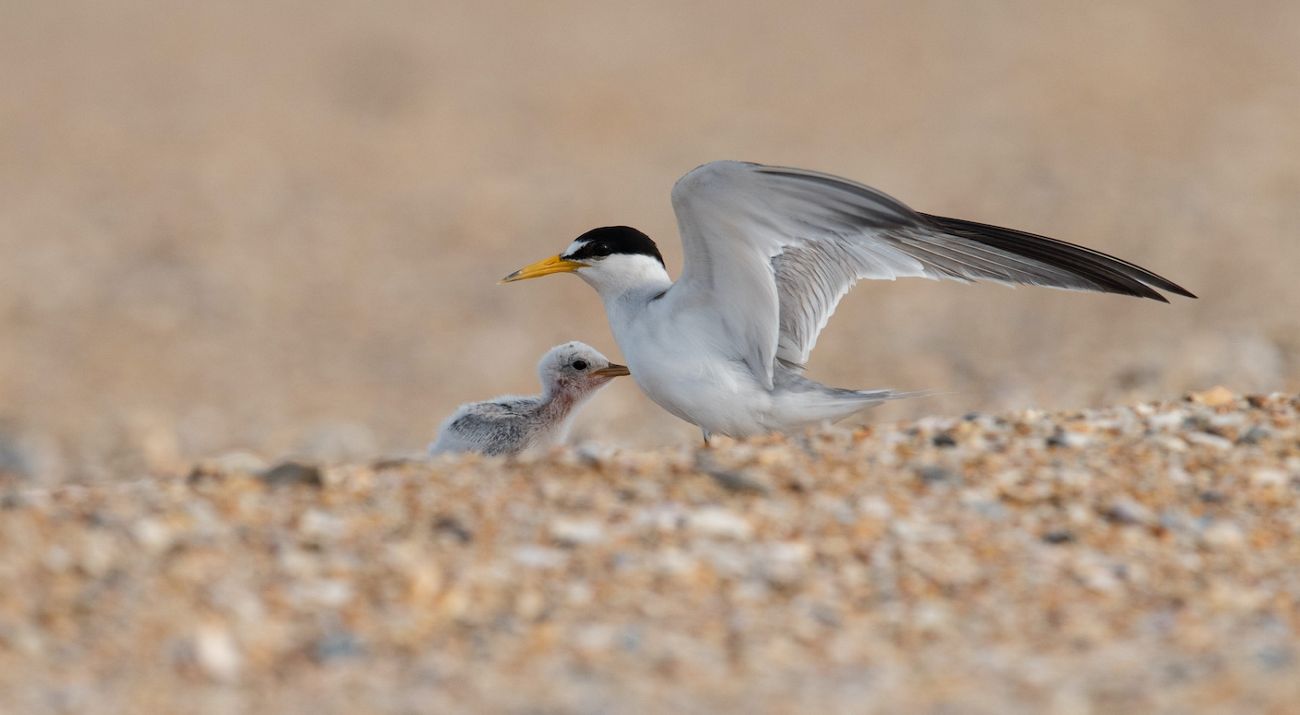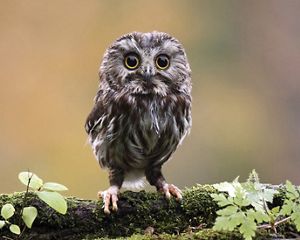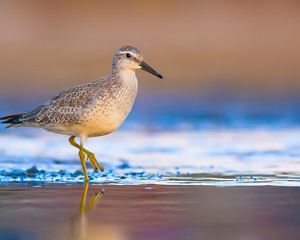Along the Jersey Shore, endangered shorebirds are struggling due to lack of habitat combined, natural predators and increased flooding from coastal storms. At the South Cape May Meadows Preserve, The Nature Conservancy (TNC) is using innovative science and a little creativity to improve survival odds for these charismatic birds.

Beachgoers are a Threat for Beach-Nesting Birds
Every summer people flock to the Jersey Shore, setting up “camps” of towels and umbrellas on the sand and foraying into the waves of the Atlantic Ocean. Many endangered shorebirds do virtually the same thing. At South Cape May Meadows, piping plovers, American oystercatchers and least terns build nests, called scrapes, in depressions in the sand. Both males and females share egg incubation duties, leaving them exposed for only the briefest of moments when they trade places. Unfortunately, even with this careful nest tending, things do not always end up well for these fragile species.
Quote: Damon Noe
Beach nesting bird success or failure seems complex, but lack of suitable habitat combined with natural predators and flooding are pretty obvious challenges.
Beach Nesters 101
Many migratory shorebirds, like least terns and American oystercatchers, can be found nesting on sandy beaches along the New Jersey shore. Because beach-nesters nest on the ground, they are vulnerable to attacks by predators, which can decimate a colony's eggs and chicks. Providing beach nesters with safe habitat is crucial to their success.
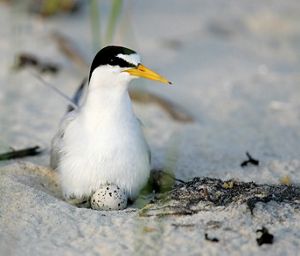
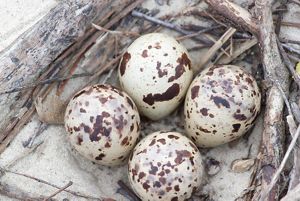
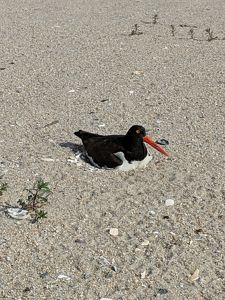
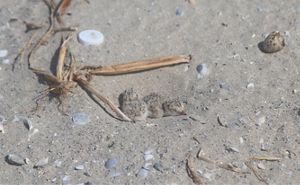

Nesting Least Tern: The smallest of American terns, the Least Tern is found nesting on sandy beaches along the southern coasts of the United States. © Shutterstock

Least Tern eggs: Beach-nesting birds like piping plovers and least terns build nests, called scrapes, in depressions in the sand. © Shutterstock

American Oystercatcher: Adults will take turns incubating the eggs to prevent them from being exposed for long periods of time. © Lily Mullock/TNC

Least Tern Chicks: Least Tern chicks are camouflaged in their sandy nest. © Shutterstock
Making Beaches Safer for Birds
For many years before the current techniques were used, there was no success for the beach-nesters. Every single nest had been lost to predators. In 2019, TNC piloted an innovative project to improve survival odds for these charismatic birds at two designated areas on the one-mile of protected beach this preserve protects.
Noe and his team mechanically removed vegetation, which impedes access to feeding areas and can hide predators. This provided the birds with open, flat nesting grounds, the ideal habitat for beach nesters. To further attract terns, plovers and oystercatchers, the team spread 45 tons of shell across the sand which is used by shorebirds for camouflage and nest-building. To inhibit predators in this special zone, they erected a six-foot fence that extends out a few feet along the ground to keep out even the most dedicated diggers.
Creative Tactics to Attract Shorebirds
This project added even more creative levels of enticement at both sites for the visiting shorebirds. Least tern and plover decoys, faux eggs, and even two custom-made bird call sound boxes were used in an attempt to attract beach-nesting shorebirds to the enclosed habitat.
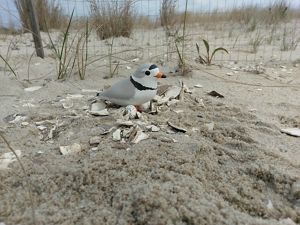
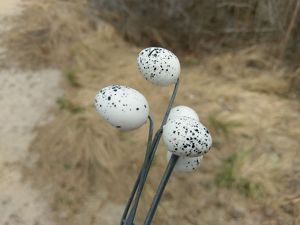
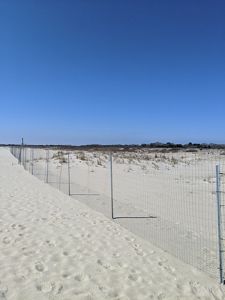
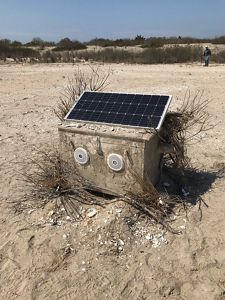

Decoy Piping Plover: These decoys will show us not only whether the plovers will be attracted, but whether the false flock helps to confuse predators. © TNC

Decoy Plover Eggs: TNC is using decoy piping plover eggs and nests in the hope they will distract or deter crows from the real things. © TNC

Nesting Exclosure: A six-foot fence surrounds the nesting habitat, keeping out larger predators like foxes and dogs. © Lily Mullock/TNC

Solar-powered Plover Call box: This custom, solar-powered box positioned inside the exclosure emits piping plover calls, to lure the birds to nest in the protected area. © TNC
“We set up a number of piping plover decoys in fake nests complete with faux eggs inside a traditional exclosure made of wire,” Noe says. “It was a test to see not only whether the plovers would be attracted, but whether the false flock helped to confuse predators.” Crows, in particular, will patiently monitor plover activity and then swoop in for a meal when the chicks leave the exclosure. “We were hoping the decoy nests would distract or deter crows from the real things,” Noe adds. While the decoy nests proved to be unsuccessful, Noe and his team saw much success with the larger fenced in exclosure.
For least terns, which spend April to August in New Jersey and like to live in colonies, decoys enhanced with sound seem to be an irresistible lure. “We installed custom, solar-powered boxes that emit least tern and piping plover calls,” says Noe. “The sounds will run all summer, but we have already seen more than 250 least terns—an enormous colony for our beach—in the restored habitat, many of them mating and displaying nesting behaviors. There is even an American oystercatcher nesting there too!”

Stay connected for the latest news from nature.
Get global conservation stories, news and local opportunities near you. Check out a sample Nature News email.

In recent years, increased intensity and frequency of coastal storms resulted in extreme flooding of the protected beach and nesting habitat. To address this, TNC installed a raised nesting platform within the beach exclosure in 2022. The platform idea stemmed from reports of least terns successfully nesting on rooftops in Florida.
TNC piloted this raised nesting area to determine if it could withstand the harsh weather conditions. Providing the birds with elevated nesting habitat also protects them from predators like ghost crabs. If this could be scaled efficiently and worked as planned, nest inundation and predation could be drastically minimized. The raised nesting platform will be closely monitored over the next several years.
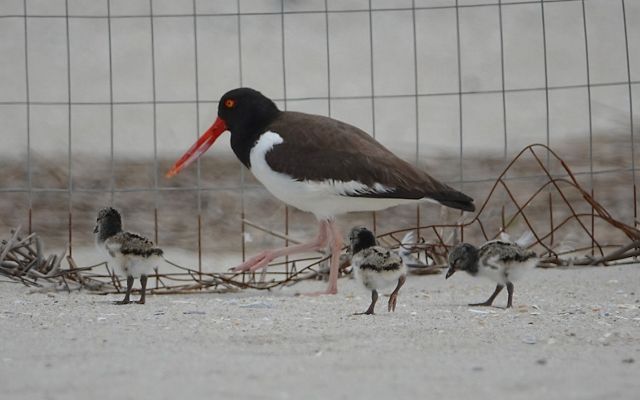
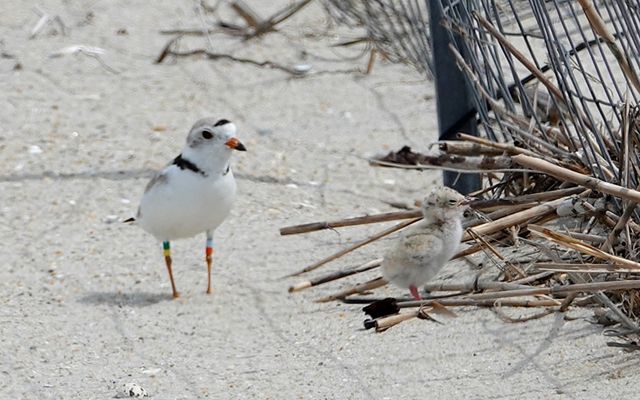
Signs of Success
So far the innovative nesting exclosure has proven to be successful. In 2019 after several years of no fruitful nesters, TNC was happy to report seven least tern fledglings. While this number may seem small, it was a huge success for TNC and the nesting shorebirds who had gone several years with no fledges. Since the exclosure’s installation, there have been successful least tern and American oystercatcher nests every year.
In 2022, TNC staff documented the largest least tern colony the South Cape May Meadows has had in years, with over 250 birds!
Since its installation, there have been zero reports of nests inside the exclosure lost to mammalian predators, a trend that TNC hopes to continue.
Not all shorebirds that nest along the New Jersey coast benefit from conservationists’ fences and decoys; it’s important that everyone do their part to help them. Take a minute to learn more about these birds and their habitats, stay away from protected areas, keep your dog leashed and pick up trash on the beach—which can be mistaken by birds as food. The Jersey Shore is for all of us, endangered plovers and terns too!

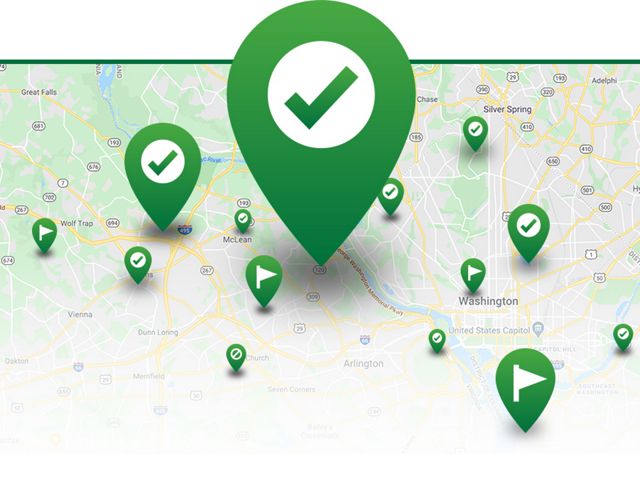
Explore More Places We Protect
The Nature Conservancy owns nearly 1,500 preserves covering more than 2.5 million acres across all 50 states. These lands protect wildlife and natural systems, serve as living laboratories for innovative science and connect people to the natural world.
